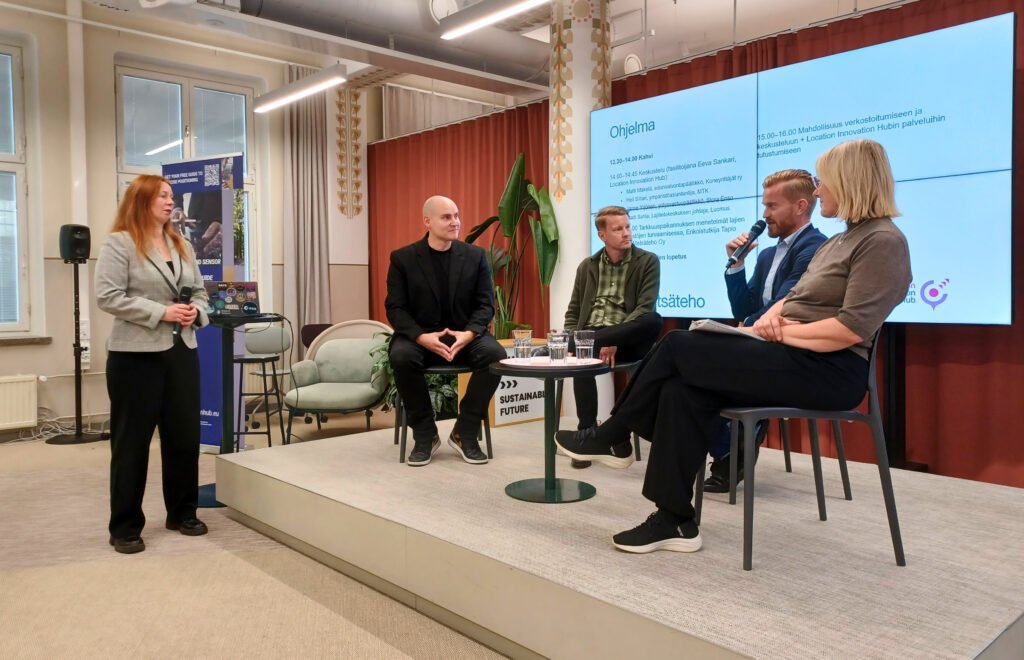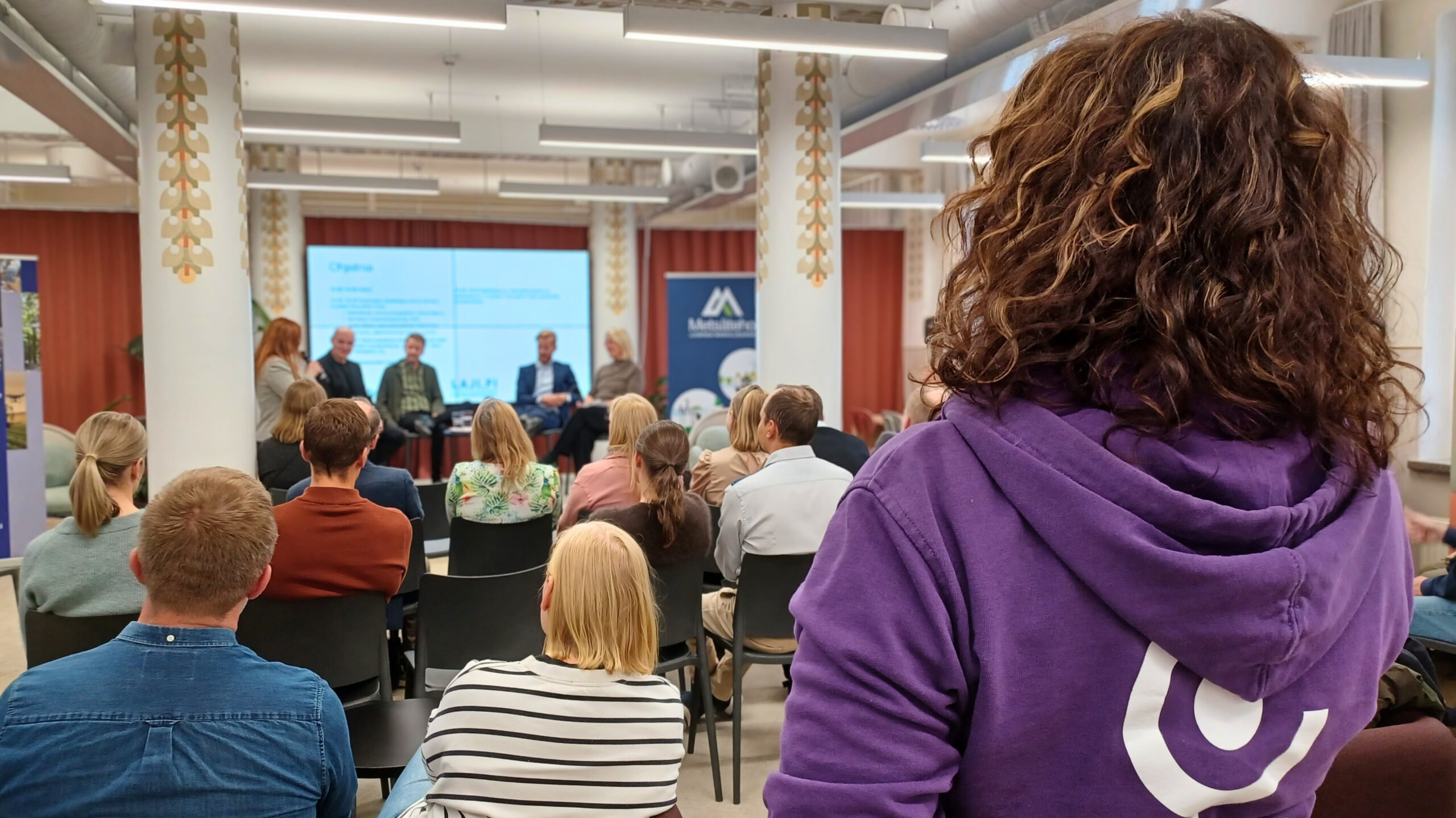In September, the Location Innovation Hub organised a seminar together with its partner Metsäteho Oy and the Finnish Biodiversity Information Facility (FinBIF). The event focused on the role of species data in supporting sustainable forestry. The invitation-only meeting brought together forestry and biodiversity experts, companies, and decision-makers to discuss how species data is produced and how its use can be improved to better serve the needs of the forestry sector.
Knowledge, practices and future perspectives
During the day, experts shared insights into practices such as how species observations are collected and used in forest management and conservation planning, and how the Finnish Biodiversity Information Facility’s data and services can be utilised.
Participants also learned about good practices and guidelines adopted by the forest industry to take species habitats into account in forest operations, as well as examples of practical solutions based on precise positioning.
“With precision positioning and mapping systems in forest machines, it’s possible to geo-fence areas where the machines must not enter. On the other hand, the positioning data recorded by harvesters can be used to verify which areas were logged and which were left untouched,” explained Tapio Räsänen, researcher at Metsäteho Oy.
The audience actively joined the discussion. There was a shared understanding of the importance of preventing incidents like the mussel destruction case in Suomussalmi and ensuring that species data is available to support biodiversity protection.
“Improving the availability and usability of species data is something we’re working on together with the forest industry. We share a common understanding of why this data is needed,” said Matti Sahla, Director of the Finnish Biodiversity Information Facility.
Preconditions for development: funding, legislation and collaboration
The event highlighted several needs related to the availability and usability of the FinBIF’s datasets. For example, making data requests and obtaining materials is sometimes perceived as complicated, and unexpected delays may occur.
“Usually, decisions are made quickly, but sometimes the process involves various approval chains. Streamlining these is also important for us,” noted Eija-Leena Laiho, IT Planner at the Finnish Biodiversity Information Facility.

Forestry sector participants expressed hopes that the so-called Otso search – predefined queries in the Laji.fi portal designed for forestry operators – would evolve to better meet their needs. There was broad agreement on the need for smarter search functions and improvements in data quality and accuracy.
The current operating model consumes too many resources and needs reform. However, public funding is tight, and during the current government term, no legislative changes are expected that would remove the barriers the forest industry faces in accessing certain species data.
“To move things forward at the FinBIF, development efforts must be project-based. The shared will is a great foundation – next we need funding to make these things happen. We are actively working to improve information systems that support the availability of species data in the forestry sector,” Sahla said, encouraging forestry actors to join and support the joint initiative.
Practical steps towards better use of species data
In the afternoon panel, participants appreciated the shared commitment that had emerged but agreed that intentions alone are not enough – practical measures are needed. It was considered essential that new processes also make the work easier for smaller forestry operators, and that the perspectives and information needs of landowners are not forgotten.
“Landowners need species data just as much as companies do. Support is also needed – for instance, making data requests should be made simpler,” said Heli Siitari, Field Manager at the Central Union of Agricultural Producers and Forest Owners (MTK). She noted that land ownership alone is not sufficient grounds for accessing sensitive species data – data access must be based on the intended use.
“We also need clear instructions for the machine operators themselves on what to do in different situations,” reminded Matti Mäkelä, Head of Advocacy at the Trade Association of Finnish Earthmoving Contractors.

The Finnish Biodiversity Information Facility receives around 3,000 data requests each year – a number that continues to grow. Participants were reminded that requests must be made carefully and were given practical tips for streamlining the process. Sharing and promoting these best practices was seen as important, and assistance is available.
“Whenever we’ve asked for help from the FinBIF, we’ve received it,” said Janne Yrjönen, Corporate Responsibility Manager at Stora Enso.
The discussion clearly showed that the focus for the future will be on improving data accessibility, simplifying data handling, and clarifying information flows. A strong foundation for collaboration has now been established – a solid starting point for moving forward.




